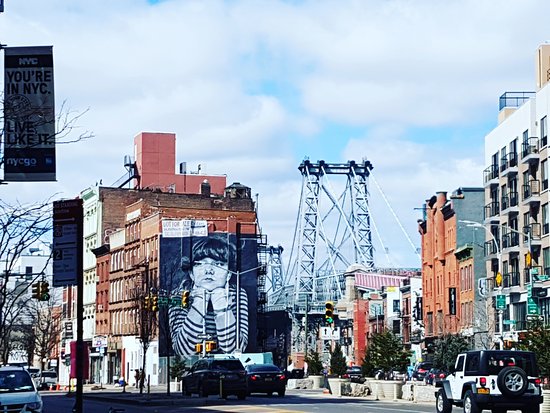One of the hippest areas in New York City hasn’t always been overflowing with artisan boutiques and carefully landscaped beards. Williamsburg, the neighborhood that has become representative of peak Brooklyn fashion, buildings and landscapes have changed in function, from factories to artist lofts, from farmland to cityscapes.
The area, which is located east of Manhattan and south of Queens at the northernmost part of Brooklyn, was purchased from Native Americans in 1638 by the Dutch West India Company, who established the town Boswijck, a name anglicized to Bushwick by British settlers in 1664. Williamsburgh (note the “h”) was established in the early 19th century, seceding from Bushwick to form an independent city.
Because of its convenient proximity to New York City, the area was used for farming for many years: goods were shipped across the East River to the market at what is now Grand Street in Manhattan. As such, the city of Williamsburgh was mostly farmland: 13-acres of it to start.
Incorporated as the Village of Williamsburgh in 1827, the population quickly urbanized from 1,000 people to 11,500 by 1845, after the annexation of several Bushwick districts. Urbanization was coupled with industrialization as new shipyard were built along with factories and warehouses.
Reflecting its population growth, the Village of Williamsburg became the Town of Williamsburg in 1840, then the City of Williamsburg in 1852. Dropped along with the “h” was the sparse scene of olden, replaced by new buildings: mansions along the shore, sugar factories, high schools, and community banks. The Williamsburg Bridge was completed in 1896 and opened in 1903; in 1896 Brooklyn was made one of New York City’s five boroughs.
By the early 20th century, Williamsburg had a much different real estate vibe than it did just several decades prior. The Williamsburg bridge, which connects Brooklyn to Manhattan’s Lower East Side, brought in a new influx of residents, mostly immigrants. After WWII many Jewish refugees settled in the area; hispanics from Puerto Rico and the Dominican Republic found home there as well.
For a time, Williamsburg became the most densely populated city in the world, characterized by cramped tenement apartments, poverty, and high crime rates. To make matters worse, deindustrialization began in 1980, and with it the shutting down of factories and job loss. But this pitfall gave rise to new opportunity, as artists attracted to lower rent and converted warehouses began to move in.
The vibrancy of the art scene would transform Williamsburg overtime into a hub of creativity, music, fashion and nightlife. Galleries, restaurants and shops opened to welcome and serve new residents, stimulating economic growth and prosperity.
The real estate in Williamsburg has been booming steadily — today’s starving artists may be more attracted to Brooklyn’s many other up and coming neighborhoods, as the bulk of Williamsburg today is a well-established center for business and recreation. Ethnic communities like Hasidic Jew and Hispanic populations remain on its periphery to this day.
With investment in revitalization, many old warehouses have been transformed into residential space; high-rise building are further modernizing the city’s architecture and skyline. The waterfront has been refurbished, and zoning laws changed to allow for more parks and green space for residents and visitors to enjoy.
From its days as farmland to a hipster mecca, Williamsburg’s transformation just one example of how real estate’s function and facade changes over time in reaction to economic and social forces.
© Times of Ukraine

